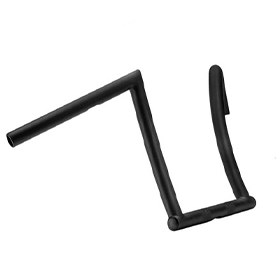- Table of Contents
The are many important components to your motorcycle that add to your comfort and safety. While you may not consider it at first, the luggage bags you use on your bike are as important as anything else. It does not matter if you are using your bike to ride to work every day or only take it out for special trips on weekends; the bags you use can make a big difference to you when it comes to comfort, protecting your belongings and more. If you are looking for new bags to use for your bike, you might be surprised to learn that you have many options available to you. There are advantages and disadvantages to each of the hard, soft, or dry bags available, and getting some of the facts can help to lead you to make the right decision for you.

1. Using Hard Luggage
Hard saddlebags typically have a strong inner shell construction of fiberglass or aluminum to provide you with greater protection. These bags work well for the traveler that goes on long trips for several reasons. The hard bags provide you with greater weather protection and water resistance than softer bags will offer you, making them great if you get caught in rainy weather. The bags also offer greater security as many feature different locking features to keep your belongings safe. The bags can also provide you with greater storage capacity, ideal for long trips where you might need to pack more. The downside of hard bags can be that they add more weight to your bike because they are naturally heavier. Hard bags also are not ideal if you plan to do much off the road riding on your bike. Since the hard bags tend to cost more and you are likely to encounter a lot of debris and perhaps falls when riding off-road, you can easily damage your expensive luggage.

2. Using Soft Luggage
Soft luggage is very often the choice of the typical motorcycle rider, whether going off-roading or for daily use. Soft bags add very little extra weight to your bike, so they are easier and more comfortable for you to use. Soft bags are easier to get into since most simply zipper closed or have clasps or buckles for closure instead of the tighter security found in many hard bags. Most soft bags also do not require special mounting hardware, making it easy for you to move the bags from bike to bike to take with you. However, soft bags do not provide you with the weather protection you may want, no matter how weatherproof they may seem. The bag will get wet over time and can cause problems for you unless you also invest in an additional rain cover.

3. Using Dry Luggage
Dry bags offer the solution to the rider that wants the convenience and lightweight nature of a soft bag while still getting the protective qualities of a hard bag. The dry bags help to keep your belongings clean and dry, so they are great to use for all bikes and road conditions, on or off the beaten path. The bags typically close with buckles and a roll top and do not use zippers and are made from highly durable materials. Dry bags can be more expensive for you, and you may want to consider this when making a purchase.

4. Making the Right Choice
With the different types of bags available, the choice ultimately comes down to you and the features you want the most. Price can play a big role in your final decision, but you want to make sure you select a bag that meets your needs for your riding. Finding a quality bag that has all the functions that are most applicable to your riding will help you to make the best investment and be happy with your purchase.















Leave a comment
All comments are moderated before being published.
This site is protected by reCAPTCHA and the Google Privacy Policy and Terms of Service apply.